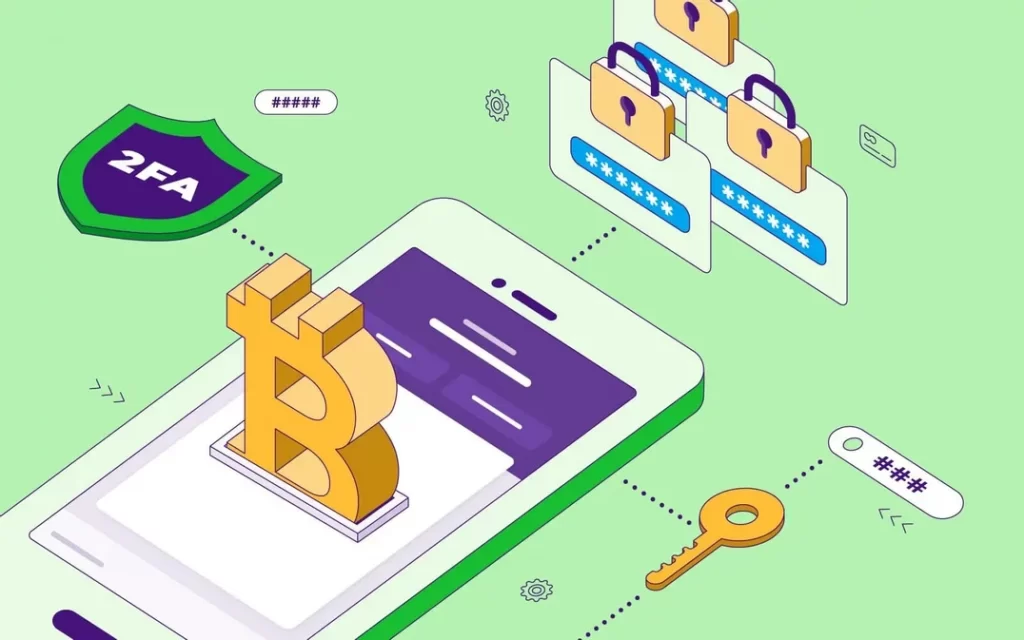The Bitcoin market cap value at the present time is much higher than other cryptocurrencies, since bitcoin is one of the oldest and most widely used peer-to-peer payment systems today. Several companies, as well as individuals, have already adopted Bitcoin as a payment method due to its popularity.
First, let’s talk about what a Bitcoin wallet is. Bitcoin wallets are digital wallets that store Bitcoins. Prior to examining the techniques and methods used to secure a Bitcoin wallet, we must first shed some light on the major security concerns and threats.
- To begin with, you should be aware of common threats, such as scamming users through fake cryptocurrencies and illicit phishing, knowing secretly your phone’s PIN code, and trying to steal cryptographic keys.
- Hackers may also use old password backups to hack Bitcoin wallets. A recovery program could be created for this purpose. So, even if your password is changed frequently, it won’t guarantee the safety of your wallet.
- As the hacker attempts to control the network with nodes, the Sybil attack blocks all transactions from other users. Users can only connect to the blocks that the hacker creates.
- An attacker will usually launch a 51% attack during the first stages of developing a Bitcoin wallet app if he or she has more computing power than the developer.
- Another type of attack includes slow down time, vulnerable transactions, and Denial-of-Service (DoS).
Having learned some of the common threats, we can see that even two-way authentication, the mysterious nature of Bitcoin, and the absence of any trustworthy third parties aren’t sufficient to guarantee the security of digital transactions. Let’s examine how Bitcoin wallets can be secured.
Bitcoin wallet encryption
You can increase your wallet’s security by encrypting it. A passphrase is required to encrypt your wallet. Unless the hacker knows your passphrase, it becomes difficult for him to take your coins.
If you use a mobile device or a laptop to perform a Bitcoin transaction, encryption of your wallet becomes that much more important since you will be connected to the internet.
Password must be strong
You probably already know this, but just to be sure, the password should be very strong. Use everything from capital letters to numbers to special characters. Avoid storing it anywhere.
Passwords should not be forgotten
You will have difficulty recovering lost funds if you forget your password. You have very few options for recovering your password in Bitcoin. You should memorize it.
Keeping the software up-to-date on a regular basis
The most common way to protect your computer is to update the software. It is necessary to use the most recent version of the Bitcoin software, regardless of what software you are using. Updating your software will keep you up to date on the latest security fixes. Your wallet will also be protected. If you do not have a current Bitcoin wallet, you may become a prime target for the attackers and phishers.
In addition, you should also maintain your devices on which you have stored all your vital data up-to-date. Hence, make sure to opt for servicing of these devices as well.
A multi-signature approaches
This is one of the most essential steps you can take to keep your Bitcoin wallet safe and secure. Do you know what it is? Well, it is a process by which an individual or a group of individuals must approve a particular transaction.
It is possible for any organization to grant access to its Bitcoin wallet, but withdrawals of funds are only possible if three to five people sign the transaction. Bitcoin wallets support multi-signature authentication, allowing users to prevent money thefts and take control of their funds.
The two-factor authentication
A Bitcoin wallet can be secured through the use of two-factor authentication (2FA). Due to the fact that it requires two pieces of information before it grants access to the wallet, this process is considered optimal. Using that method, even if someone guesses or obtains your password, they cannot access your wallet without the other factor.
For setting up 2FA on your wallet, you have a couple of options. There is Google Authentication, which uses a six-digit number that changes every minute, but which you know. There is also biometric identification, which has become very popular. You need to provide a fingerprint for this. Choose one of the following options, whichever is most convenient for you. Keep in mind that not every wallet supports 2FA.

